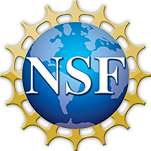Abstract
Chloroflexi small-subunit (SSU) rRNA gene sequences are frequently recovered from subseafloor environments, but the metabolic potential of the phylum is poorly understood. The phylum Chloroflexi is represented by isolates with diverse metabolic strategies, including anoxic phototrophy, fermentation, and reductive dehalogenation; therefore, function cannot be attributed to these organisms based solely on phylogeny. Single-cell genomics can provide metabolic insights into uncultured organisms, like the deep-subsurface Chloroflexi. Nine SSU rRNA gene sequences were identified from single-cell sorts of whole-round core material collected from the Okinawa Trough at Iheya North hydrothermal field as part of Integrated Ocean Drilling Program (IODP) expedition 331 (Deep Hot Biosphere). Previous studies of subsurface Chloroflexi single amplified genomes (SAGs) suggested heterotrophic or lithotrophic metabolisms and provided no evidence for growth by reductive dehalogenation. Our nine Chloroflexi SAGs (seven of which are from the order Anaerolineales) indicate that, in addition to genes for the Wood-Ljungdahl pathway, exogenous carbon sources can be actively transported into cells. At least one subunit for pyruvate ferredoxin oxidoreductase was found in four of the Chloroflexi SAGs. This protein can provide a link between the Wood-Ljungdahl pathway and other carbon anabolic pathways. Finally, one of the seven Anaerolineales SAGs contains a distinct reductive dehalogenase homologous (rdhA) gene.
IMPORTANCE Through the use of single amplified genomes (SAGs), we have extended the metabolic potential of an understudied group of subsurface microbes, the Chloroflexi. These microbes are frequently detected in the subsurface biosphere, though their metabolic capabilities have remained elusive. In contrast to previously examined Chloroflexi SAGs, our genomes (several are from the order Anaerolineales) were recovered from a hydrothermally driven system and therefore provide a unique window into the metabolic potential of this type of habitat. In addition, a reductive dehalogenase gene (rdhA) has been directly linked to marine subsurface Chloroflexi, suggesting that reductive dehalogenation is not limited to the class Dehalococcoidia. This discovery expands the nutrient-cycling and metabolic potential present within the deep subsurface and provides functional gene information relating to this enigmatic group.

